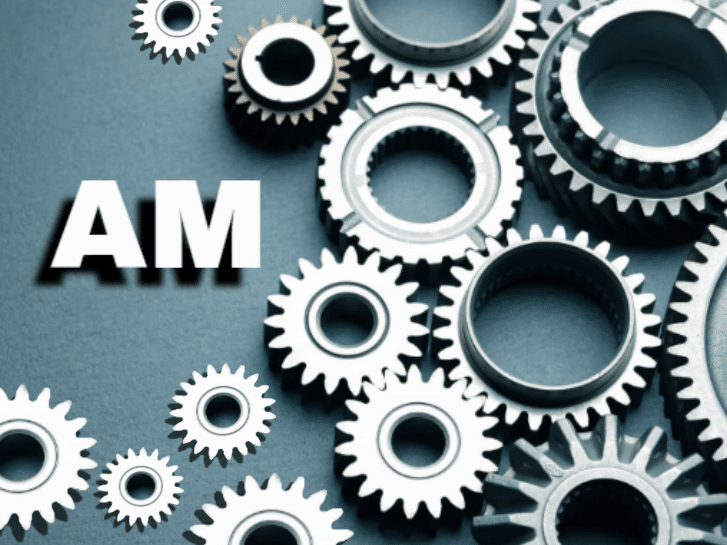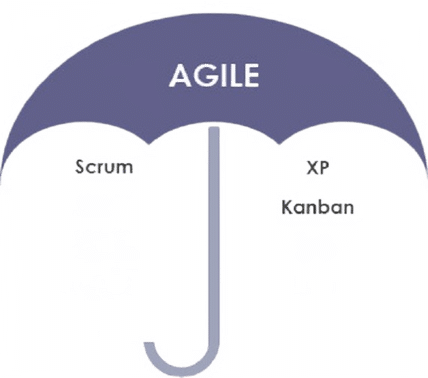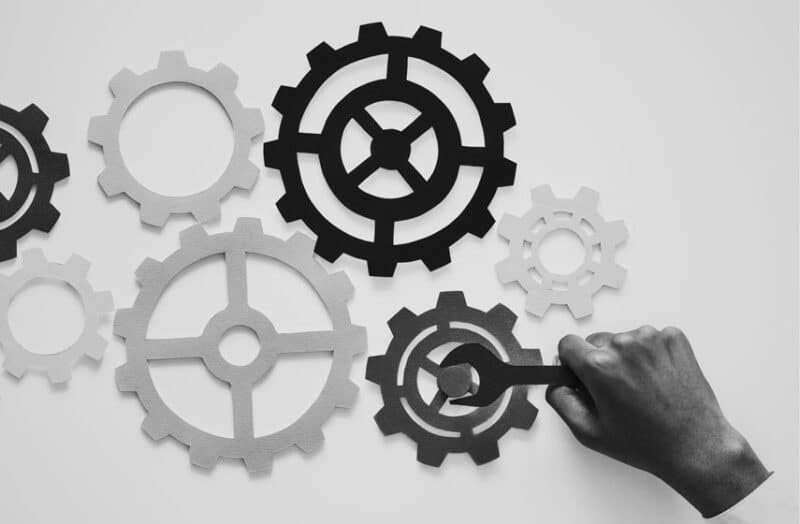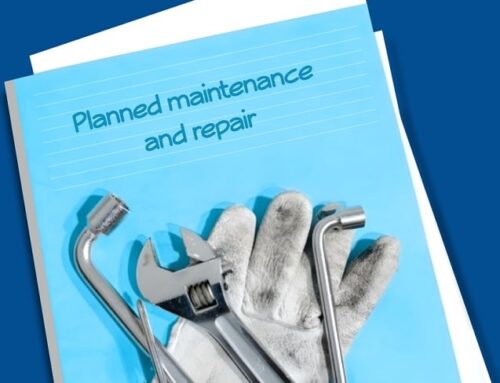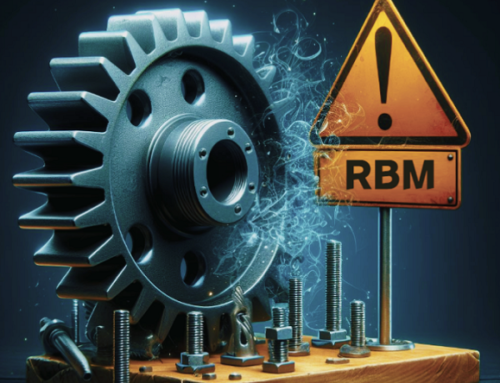Agile Maintenance and repair (AM)
What you read in this article:
Agile maintenance and repair (AM)
The most important features of agile maintenance and repairs
Basic principles and concepts of agile maintenance and repairs
Advantages and disadvantages of agile maintenance and repairs
What are Scrum, Kanban and Extreme Programming processes?
Implementation of agile maintenance and repairs in teams
Tools used for agile maintenance and repairs
The difference between agile development and traditional software development methods
Agile maintenance and repair(AM) is a management approach to perform maintenance and repair activities in organizations. This approach focuses on the principles and concepts appropriate to agile processes, which were initially used in the field of software development and then expanded to the field of maintenance and repairs.
Agile maintenance is also known as adaptive maintenance. In the following, we examine the agile maintenance model.
Agile maintenance is the practice of rapidly responding to changes by focusing on evolving process and customer needs. It focuses on rapid iteration and continuous delivery with the goal of better responding to changing needs. Communication, mutual cooperation and team and individual autonomy are the key principles of this framework.
In the approach of agile maintenance and repairs, the focus is on short-term and consecutive activities that increase the organization’s flexibility and ability to face changes and variable needs. Overall, Agile Maintenance improves the efficiency and effectiveness of maintenance and repair processes through a focus on continuous change, team collaboration, and greater productivity.
-
The most important features of agile maintenance and repairs:
- Collaboration and Interaction: In agile maintenance and repair, interaction and collaboration between team members and other stakeholders is very important. Through continuous communication and coordination between team members, problems are identified and necessary improvements are implemented.
- Flexible planning: In this approach, planning is done through short and changeable phases. Instead of detailed planning and accurate forecasting, an integrative and adaptive approach to planning is used.
- Prioritization: according to the priorities and importance of customers, activities and tasks related to maintenance and repairs are determined based on their importance and urgency. This makes more efficient use of resources and time.
- Repetition and feedback: In agile maintenance and repairs, activities are performed continuously and repetitively. Also, processes and methods are improved based on continuous feedback and evaluation.
- Use of technology: in agile maintenance and repairs, the use of technology and advanced management tools is considered to improve efficiency and productivity. Agile maintenance and repairs is a management approach that focuses on the principles of agility and agile development of organizations. In this approach, the focus is on continuous changes and flexibility in maintenance and repair activities.
-
Basic principles and concepts of agile maintenance and repairs:
In agile maintenance and repairs, several principles and concepts are used to achieve greater flexibility, efficiency and cooperation in software development processes. Below, we review some of these key principles and concepts:
- Value-Driven: Agile maintenance focuses on the value created for customers and users. This approach focuses on business values and strives to deliver achievable value to customers at every stage of development.
- Iterative and Incremental: Agile maintenance and repairs divide work into repeated and repeatable cycles. Each cycle includes planning, development, testing and feedback from customers. This iterative process causes continuous improvement of the software and creates opportunities for improvement.
- Collaboration and Self-Organization: Agile maintenance relies on active collaboration and interaction between team members. Teams act as self-organizers and perform tasks with flexibility and coordination with each other.
- Agile Development: Agile maintenance and repairs means speeding up software development processes and not waiting for all the details before starting. In agile development, work is done in short, iterative phases that allow teams to react quickly and accommodate change factors.
- Prioritization: In AM, prioritization is based on the value and importance of customers. Tasks and capabilities are determined based on business value and customer needs and are performed in order of priority.
- Continuous Testing: Agile maintenance and repairs emphasize software quality assurance. Tests are done continuously and continue from the beginning of the process to its end. This approach ensures that the software works correctly and meets the needs of the users at every stage.
- Continuous Delivery: In agile maintenance and repairs, efforts are made to deliver the software to the customer continuously and in short intervals. This approach allows teams to quickly deliver changes and small improvements to customers and get their feedback.
- Flexibility: Agile maintenance and repairs use high flexibility to face changes and customer needs. This approach allows teams to quickly respond to changes and new requests and improve the software.
- Customer Feedback: In agile maintenance and repairs, feedback from customers and users is important at every stage. Feedback helps teams to make necessary improvements and create more added value for customers.
- Continuous Analysis and Improvement: In AM, continuous analysis and improvement of processes and team performance is done. By analyzing the collected data and information, the necessary improvements are applied in the processes and methods.
These principles and concepts are used in agile maintenance and repair and help teams to make continuous improvements in software development processes and achieve greater efficiency.
-
Advantages and disadvantages of agile maintenance and repairs:
Agile Maintenance and Repair is based on methods such as Scrum and Kanban (briefly explained below) and can have its advantages and disadvantages. Below I will mention some of its advantages and disadvantages:
Advantages:
- Quick response: In agile methods, maintenance and repair teams are able to respond quickly to customer needs and requests. Using agile methods, teams can quickly assign and prioritize tasks and react immediately to solve problems.
- Flexibility: Agile methods have high flexibility. Maintenance teams can proactively plan and adapt to changes and customer needs. This allows them to react quickly and implement the necessary improvements.
- Transparency: Agile methods provide high transparency about project status and current maintenance. Through Scrum or Kanban methods, maintenance teams can provide regular updates on their tasks and progress. This transparency makes it easy for all team members and customers to understand the current situation.
Disadvantages:
- Lack of accurate forecasting: In agile methods, long-term planning is difficult and may be faced with the lack of accurate forecasting of needs and problems. This can cause delays in repairs and maintenance and ultimately lead to customer dissatisfaction.
- Use of resources: There is a need for flexible resources and the ability to manage resources in agile methods. Maintenance teams must be able to properly allocate their resources and terminate teams as needed. Otherwise, the requirements may exceed the capacity of the team and affect the performance of maintenance and repairs.
- Coordinated work: In agile methods, active interaction and cooperation between team members is required to achieve a common goal. If there is not enough coordination, the completion of tasks and projects may encounter problems and be delayed.
- Continuous change: In this method, there are frequent and continuous changes in needs and priorities. This may cause fluctuations in scheduling and maintenance, and may cause problems for some team members.
In general, agile maintenance and repairs can bring significant improvements in response speed, flexibility, and transparency. However, there is also a need for proper resource management, coordination, and the ability to anticipate needs and changes. It is better to decide on the use of agile methods based on the specific conditions and needs of the organization and maintenance team.
-
What are Scrum, Kanban and Extreme Programming processes?
Below I briefly explain about Scrum, Kanban and Extreme Programming(XP) processes.
Scrum: Scrum is an agile development process used to manage and execute software projects. In this process, the team’s work is divided into short and repetitive cycles called Sprints, which usually last between 1 and 4 weeks. Each sprint includes stages of analysis, design, development, testing and delivery of a usable version. At the end of each sprint, the results of the capabilities created by the development team are presented to the customer. The team uses a Scrum Board to manage and track tasks and sprints.
Kanban: Kanban is also an agile development process used to manage work flow. In this process, the focus is on making the workflow clear and visible. All tasks or tasks are placed on a Kanban board, which includes columns such as “in progress”, “pending” and “done”. Each column is driven by the work of the team, and the goal is for the work flow to proceed continuously and without blockages. The main purpose of Kanban is to reduce waste and improve productivity.
Extreme Programming(XP): is an agile software development method based on principles such as simultaneous development, continuous customer feedback, and continuous testing. In this method, team work is done using methods such as Test-Driven Development and Pair Programming. The purpose of using XP is to increase the quality of the software, improve interactions within the team and continuous management of the project.
Each of these three processes has unique features and principles and can be chosen according to the needs and conditions of the project.
-
Implementation of agile maintenance and repairs in teams
To implement agile maintenance and repairs in your team, you can follow the steps below:
- Training: Ensure team members are familiar with agile maintenance concepts and principles. You can hold training sessions and workshops to familiarize them with the relevant methods, processes and tools.
- Team Building: Build an agile maintenance and repair team that includes members with diverse skills and expertise. The team should consist of all areas and areas of your maintenance and repairs and have the necessary capabilities.
- Prioritize: Work with your team to prioritize maintenance and repairs. This can be based on the severity of problems, their effects on system performance, or customer needs.
- Method selection: Choose an agile method (such as Scrum or Kanban) to manage and plan maintenance activities. This method helps you assign tasks, track progress, and manage change.
- Assignment of tasks: Assign tasks related to maintenance and repairs to team members. Use relevant tools such as Scrum boards or Kanban systems to track tasks.
- Implementation and follow-up: Encourage the team to implement tasks and track the progress of each task. Ensure maintenance processes are progressing and issues are resolved in a timely manner.
- Feedback and improvement: After completing each task or project, give feedback to your team. Check out what was good and what could be improved. Use this feedback to continuously improve and optimize processes.
- Collaboration and Communication: Promoting collaboration and communication among team members is very important. Creating an open space for communication and collaboration, sharing knowledge and experiences, and solving problems as a group can help improve maintenance and repair processes.
- Automation and use of tools: Using the right tools and technologies can help improve maintenance and repairs. Using automation and repair management systems (such as CMMS) can make processes faster and more efficient.
- Flexibility: Agile maintenance and repairs require flexibility. The team must be able to change quickly and react to unexpected problems. Ongoing training, skills development and encouraging innovation can help keep the team flexible.
- Measurement and Analysis: Identify key performance metrics and use them to measure and track team performance. By analyzing data and reports, you can identify strengths and weaknesses and implement necessary improvements.
By implementing these steps, you can improve agile maintenance and repair in your team and have a more efficient operation.
-
Tools used for agile maintenance and repairs
For agile maintenance and repairs, you can use different tools and technologies. Below are some common tools for agile maintenance and repairs:
- Maintenance Management System(CMMS): These systems help you plan, track and manage maintenance tasks. They include scheduling repairs, managing spare parts, recording repair reports and other related tasks.
- Analysis and prediction tools: You can use data analysis and artificial intelligence tools to predict errors and the need for repairs. These tools can identify problems based on historical data and advanced algorithms and help you plan repairs more proactively and optimally.
- Test and measurement tools: Using accurate test and measurement tools can help diagnose and repair problems. These tools include scopes, multimeters, network testers and other related specialized tools.
- Diagnostic Tools: These tools help you diagnose problems and fix them quickly. For example, fault scanner tools to detect common faults in cars, network monitoring tools to detect network problems, etc.
- Tracking and location tools: Using tracking and location tools can help in tracking and managing property and equipment needed for maintenance and repairs. For example, tagging equipment with RFID technology and using geographic location management programs(GIS) for accurate equipment tracking.
- Collaboration and project management software: Using collaboration and project management software can help improve coordination and communication between maintenance and repair team members. These software include project management systems, interactive tools such as schedules, Gantt charts, collaborative tools, and cloud-based software for collaboration and coordination during the repair process.
- Performance measurement and evaluation tools: Using performance measurement and evaluation tools can help you monitor the performance of equipment and processes and implement necessary improvements. These tools can include online measurement tools, monitoring systems, and performance analysis tools.
- Quality control tools: To ensure the quality of repairs and maintenance, you can use quality control tools such as checklists, inspection methods and non-destructive tests.
- Virtual training and education tools: You can use virtual training tools, training videos, online training systems, and other training methods for continuous training and education of maintenance and repair staff.
In general, the use of appropriate tools and modern technologies can help improve and improve productivity in agile maintenance and repair processes. Of course, the choice of tools depends on the specific needs and circumstances of your organization.
-
The difference between agile development and traditional software development methods
Agile development and traditional software development methods differ in several aspects. Below, we will examine the main differences between these two approaches:
- Process approach: Traditional software development methods usually use the waterfall model or V model for development. In these approaches, the development process proceeds linearly and each phase begins after the completion of the previous phase. While in agile development, the development process is iterative and incremental. The work is done in short and repetitive cycles, and each cycle includes analysis, design, development, testing and providing usable capabilities to the customer.
- Communication with the customer: In traditional methods, interaction with the customer mainly happens in the initial stages of the project and in the analysis and design phase. After that, many changes in requirements and software development are not accepted. In agile development, continuous cooperation and interaction with customers and users takes place during the development process. Customer feedback is reviewed in each cycle of development and changes in requirements and tasks can be made.
- Adapting to changes: Traditional methods usually require precise determination of requirements and detailed planning of all phases at the beginning. If the needs or conditions change, the changes may introduce complexity and high costs to change the process. In agile development, changes and new needs are accepted over time and teams can quickly react to them and implement the necessary improvements.
- Risk management: Traditional methods usually do not emphasize risk analysis and management, and project management in them is more phased and planned. In agile development, risk management is an important component. Due to the iterative and incremental nature of the development process, risks are continuously reviewed and managed, and teams have the ability to implement changes and respond to problems.
- Flexibility: Agile development provides greater flexibility in response to changes and new needs. Due to short development cycles and continuous interaction with the customer, it is possible to change elastically and implement new needs faster. In traditional methods, changes in later stages of development are more problematic and costly.
- Implementation method: Agile development includes specific management processes and principles such as Scrum, Kanban or Extreme Programming(XP), while traditional methods are usually implemented based on standards and models such as ISO or CMMI.
Finally, the choice between agile development and traditional methods depends on the type of project, environmental conditions and development needs. Each method has its advantages and disadvantages and should be chosen according to the desired conditions.

